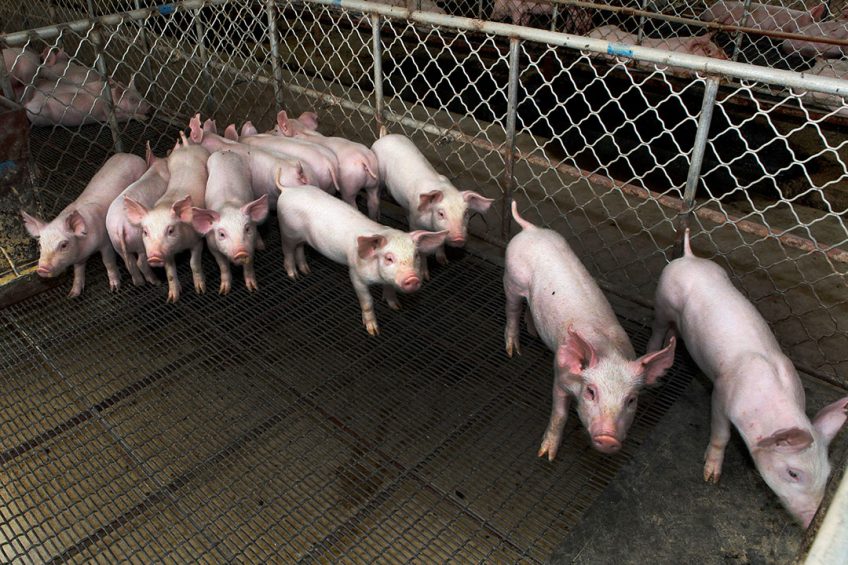ASF China: Virus reaches Ningxia; more cases in Mongolia

The outbreak of African Swine Fever in Mongolia has turned out not to be a one-off case. Soon after the initial reporting of the virus on a backyard farm, 4 more cases were reported to the OIE, one of which is close to the capital Ulaanbaatar. In China, the virus was reported in province number 26: Ningxia.
It is not the number of affected pigs (374) that dazzle when it comes down to the 4 new outbreaks, as all pigs were found on backyard farms. The locations of the outbreaks submitted to the World Organisation for Animal Health (OIE), however, do worry. Compared to the initial reported outbreak in Bulgan province, the newly reported locations are 100 km to the north (2 close to each other), 260 km to the west and 350 km to the south. This shows that the virus has spread out over Mongolia – not a country that is particularly dense in pigs by the way.
ASF outbreak(s) close to capital city
One outbreak was confirmed on a backyard farm in Tuv province, at about 30 km south of the capital Ulaanbaatar. On this farm, 17 pigs were found to be affected with the ASF virus. With almost 1.4 million inhabitants, virtually half of all the country’s inhabitants live in the city.
That may not be all from the capital. According to the website of the Food and Agriculture Organization (FAO), an outbreak was also reported in Ulaanbaatar. So far, this notification has not been submitted to the OIE.
The southernmost outbreak in Mongolia, located in Dundgovi province, is at about 630 km in a straight line north from the nearest-known outbreak in China. That one took place in Baotou, Inner Mongolia, on 21 November. The northernmost outbreak in Mongolia is at 380 km south of Irkutsk, Russia, where ASF was found on a backyard farm in March 2017.
In total, the OIE has now received 5 reports from Mongolia and 108 from China. On top of that, one dead pig, tested positive for ASF, was found on the shores of Kinmen Island, part of Taiwan. According to the latest update by the Food and Agricultural Organization (FAO), more than 916,000 pigs have been culled in China in an effort to halt further spread.
Ningxia region 26th to report ASF
Meanwhile the spread in China continued this week with the confirmation of an outbreak in inland Ningxia Hui, an autonomous region, where hitherto no prior outbreak had been confirmed. The outbreak in the north of the province was found in a backyard farm of 57 animals. The Ningxia region is surrounded on 3 sides by the Gansu province, where 2 other outbreaks were reported in January.

Read more on African Swine Fever in the Health Tool
China pork output down in 2018
The Chinese authorities also presented the pork production figures over 2018 recently, and the total amount came to 54.04 million tonnes – which according to news agency Reuters is 0.9% lower than in 2017. Output had grown in the 1st 3 quarters of the year. The total number of slaughtered pigs fell by 1.2% to 639.82 million head.
The figures surprised analysts, who had expected an increase of pig slaughterings as many pig farmers might have wanted to liquidate their herds due to ASF.
The news agency quoted the Chinese National Bureau of Statistics that the total herd size declined by 3% to 428.17 million head.

What has the development of pig numbers in China been until 2017?
Australia: ASF in food product
After similar reports from Taiwan, South Korea and Thailand, the Australian border control has now also confirmed the discovery of ASF in food products brought into the country. After increasing their efforts as the virus continues to spread globally, the authorities seized 152 pork products at Australian airports and mail centres over a 2-week period. Following testing by staff from the Department of Agriculture and Water Resources’ ASF was found in 6 of them. All of the samples seized were destroyed and do not pose a threat to the pig industry in Australia.

A few years ago, pig market expert Dr John Strak analysed the Australian pig industry. Strict biosecurity rules is one of the characteristics.
Thanks to Chris McCullough who helped compiling the information in this article.











